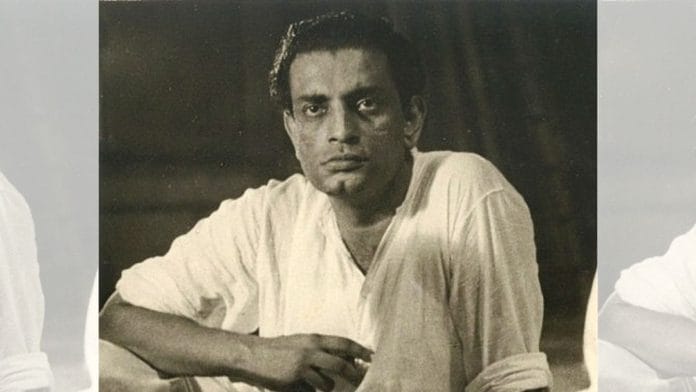New Delhi: A day after India suggested to Bangladesh to ‘reconsider’ demolishing the purported ancestral home of legendary filmmaker Satyajit Ray in Mymensingh, Bangladeshi authorities Thursday denied any historical connection between the Ray family and the property, even as the demolition was reportedly halted following “public outcry”.
“The house in question never had any relation with the ancestors of the esteemed laureate Satyajit Ray,” Bangladesh’s Ministry of Foreign Affairs said Thursday in a statement.
Meanwhile, according to a report by The Daily Star, the demolition of the building was halted, based on Mymensingh city deputy commissioner’s orders.
Local reports this week had indicated that the ancestral home of Ray’s grandfather and writer-painter Upendrakishore Ray Chowdhury in Mymensingh city in Bangladesh was being demolished. This sparked sharp criticism, with West Bengal Chief Minister Mamata Banerjee calling the move “extremely distressing” and appealing to both governments to protect what she described as a vital piece of shared cultural heritage.
On Wednesday, India’s Ministry of External Affairs (MEA) expressed “profound regret” over the demolition reports. In a statement, the ministry noted the building’s “landmark status, symbolising Bangla cultural renaissance”, and urged Bangladesh to “reconsider” the demolition.
“Given the building’s landmark status, symbolising Bangla cultural renaissance, it would be preferable to reconsider the demolition and examine options for its repair and reconstruction as a museum of literature and a symbol of the shared culture of India and Bangladesh,” the statement read. “India would be willing to extend full cooperation toward preserving the structure as a museum of literature and shared cultural values.”
In response, the Bangladesh interim administration led by Chief Adviser Muhammad Yunus clarified Thursday, “Detailed inquiry into the archival records re-confirmed that the house in question never had any relation with the ancestors of the esteemed laureate Satyajit Ray.”
Detailed inquiry into archive/records in #Bangladesh reconfirm: the building being demolished in #Mymensingh district has no historical/familial link to iconic Bengali filmmaker #Satyajit Ray or his ancestors. pic.twitter.com/IT4uwtvBFm
— Ministry of Foreign Affairs (@BDMOFA) July 17, 2025
The country’s foreign ministry elaborated that land records and archival documents show the property was originally built by local zamindar Shashikant Acharya Chowdhury as staff quarters adjacent to his estate, Shashi Lodge. Following the abolition of the zamindari system, the building was nationalised, and later leased to the Bangladesh Shishu Academy. For decades, it served as the District Shishu Academy’s office, with the land formally categorised as government-owned (khas) property.
The statement added that consultations with local historians, senior citizens and writers brought out no evidence of the Ray family’s association with the structure, and that the building is not even listed as a protected archaeological site.
The only recognised connection to the Ray lineage in the area is the Harikishore Ray Road, named after Ray’s great-grandfather, who was the adoptive father of Upendrakishore Ray Chowdhury. The Ray family once owned a residence on this road, but it was sold long ago and replaced with a multi-story building.
The statement added that the decision to demolish the building was made in early 2024, with plans to replace it with a semi-permanent facility for children’s development under the academy, and a public auction notice for the demolition was issued through national and local newspapers on 7 March, 2025.
The issue stirred significant debate this week. Prominent Bangladeshi media outlets, such as The Daily Star and Prothom Alo, had earlier reported that the building, located along Harikishore Ray Chowdhury Road in Mymensingh, was constructed over a century ago by Upendrakishore Ray Chowdhury. Following the 1947 Partition, the property had reportedly come under government control.
Despite years of disrepair and inactivity, activities at the academy ceased roughly a decade ago. In other reports, local poets, activists and some historians argued that the building’s heritage value has long been ignored. “The house remained in a sorry state for years, with cracks forming on its roof—yet the authorities never cared about the rich history these old buildings hold,” Bangladeshi poet Shamim Ashraf was quoted as saying in The Daily Star.
(Edited by Mannat Chugh)






